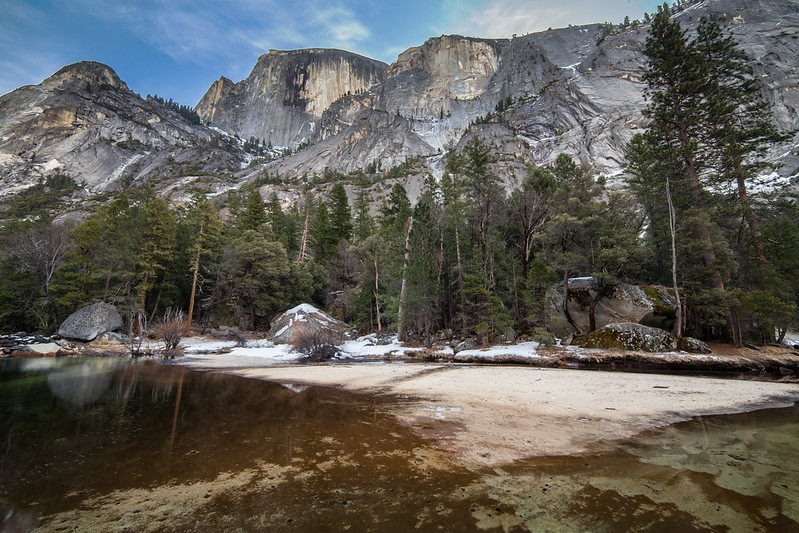I just came back from Yosemite. I have to admit that February is now my favorite month to visit that region. The valley floor is still a bit busy, but the hiking trails are pretty quiet. I was not able to see the Horsetail Fall's Fire Fall due to it being cloudy when I went to watch it. There were well over a hundred photographers there waiting to catch a shot though! Anyhow if you have the option too, I would highly recommend staying a weekend in Yosemite during the month of February. Just don't wear tennis shoes!!!
I did notice that about 80% of photographers were walking around with a 70-200 F2.8 (canon/nikon/tamron/etc.). For the life of me, I could not figure this out! For my entire trip, I was constantly reaching for my 14mm uwa lens. If that was not on the camera, the 50mm was. I only put my 70-200mm on my camera 3 times over the course of the trip.
I do understand wanting that focal range for the waterfalls when observing from a distance, but these lenses were everywhere. Does anyone know why everyone in Yosemite has that lens attached to their camera 24/7???
Anyhow, here are a couple pictures from the trip. Hope you like them!
Also, feel free to critique the photos. Any advice would be greatly appreciated!

Mirror Lake Trail by Live By The Night, on Flickr

Vernal Falls by Live By The Night, on Flickr
I did notice that about 80% of photographers were walking around with a 70-200 F2.8 (canon/nikon/tamron/etc.). For the life of me, I could not figure this out! For my entire trip, I was constantly reaching for my 14mm uwa lens. If that was not on the camera, the 50mm was. I only put my 70-200mm on my camera 3 times over the course of the trip.
I do understand wanting that focal range for the waterfalls when observing from a distance, but these lenses were everywhere. Does anyone know why everyone in Yosemite has that lens attached to their camera 24/7???
Anyhow, here are a couple pictures from the trip. Hope you like them!
Also, feel free to critique the photos. Any advice would be greatly appreciated!

Mirror Lake Trail by Live By The Night, on Flickr

Vernal Falls by Live By The Night, on Flickr







